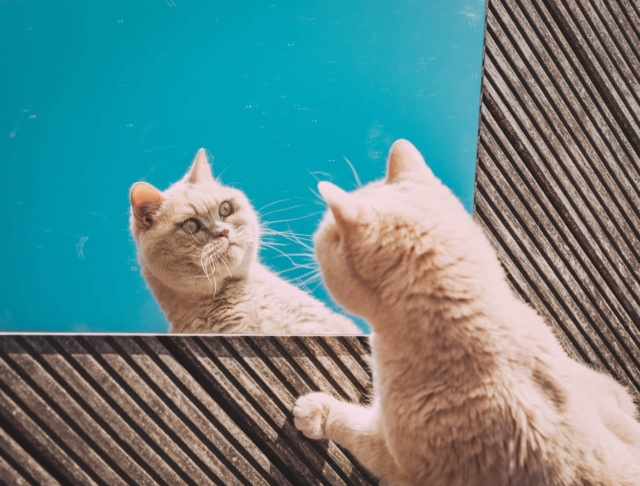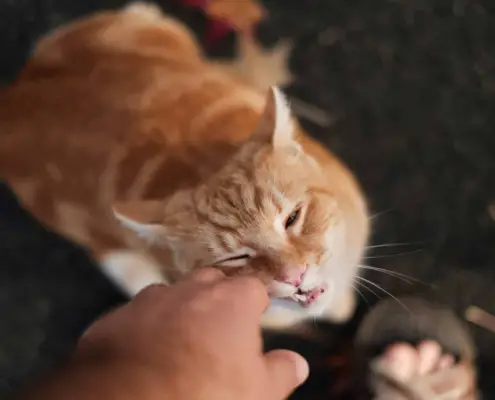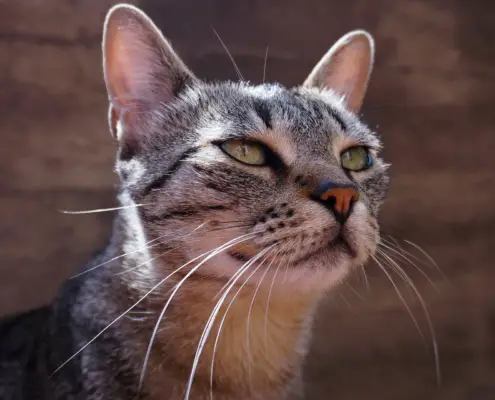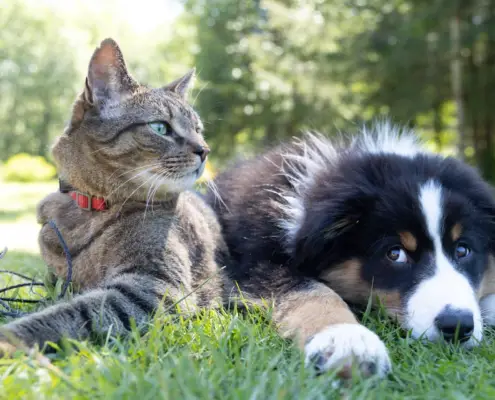
Cats have long been stereotyped as aloof and unfriendly creatures. However, this is a misconception that fails to acknowledge the true nature of these fascinating animals. In reality, cats are highly social beings that can form deep bonds with their human companions. To understand why some cats may appear unfriendly, it is crucial to delve into the factors that influence their behavior. By debunking these misconceptions and exploring the true nature of cats, we can uncover the key factors that make cats friendly and relaxed.
Understanding the Factors that Influence a Cat’s Friendliness
Cats, like humans, are individuals with unique personalities. While some cats may naturally be more sociable and affectionate, others may be more reserved or independent. It is important to remember that a cat’s friendliness is influenced by a combination of genetic predisposition, early socialization experiences, and their environment. By understanding these factors, cat owners can better appreciate and nurture their furry companions’ natural inclination towards friendliness.
The Role of Socialization in a Cat’s Behavior
Socialization plays a vital role in shaping a cat’s behavior and level of friendliness. Kittens that have positive experiences with humans, other animals, and various stimuli during their early developmental stages are more likely to grow up to be friendly and well-adjusted cats. Proper socialization involves exposing kittens to a wide range of positive experiences, such as gentle handling, playtime, and exposure to different sounds and environments. By providing kittens with these positive interactions, cat owners can help them develop a confident and friendly demeanor.
The Impact of a Cat’s Environment on Their Friendliness
A cat’s environment plays a significant role in determining their overall friendliness and relaxation levels. Cats thrive in an enriched environment that offers ample opportunities for exploration, play, and relaxation. Providing cats with vertical spaces, scratching posts, interactive toys, and comfortable resting areas can greatly contribute to their overall well-being and contentment. Additionally, a calm and peaceful environment free from excessive noise, stress, or conflict can help cats feel secure and more inclined to exhibit friendly behavior.
The Importance of Positive Reinforcement in Cat Training
Positive reinforcement is a powerful tool in shaping a cat’s behavior and fostering friendliness. Cats respond well to rewards such as treats, praise, and playtime when they exhibit desirable behaviors. By using positive reinforcement techniques, cat owners can encourage their feline companions to engage in friendly and relaxed behaviors. It is important to remember that punishment or negative reinforcement can have adverse effects, leading to fear, stress, and even aggression in cats. Focusing on positive reinforcement creates a nurturing and trusting relationship between cats and their human counterparts.
How to Create a Friendly and Relaxed Environment for Your Cat
Creating a friendly and relaxed environment for your cat is essential for their overall well-being and happiness. Start by providing them with a safe and comfortable space that includes cozy beds, hiding spots, and scratching posts. Make sure to offer a variety of toys and engage in interactive play sessions to keep them mentally stimulated. Establish a regular routine for feeding, playtime, and grooming to provide a sense of stability and security. Additionally, ensure that your cat has access to fresh water, a balanced diet, and regular veterinary care to support their physical health.
Tips for Building a Strong Bond with Your Cat
Building a strong bond with your cat is a rewarding experience that requires patience, understanding, and love. Spend quality time with your cat every day, engaging in activities they enjoy, such as play sessions, grooming, or simply relaxing together. Respect your cat’s boundaries and allow them to initiate physical contact when they feel comfortable. Use a calm and soothing voice when interacting with your cat and avoid sudden movements or loud noises that may startle them. By consistently demonstrating love, care, and respect, you can foster a deep and lasting bond with your feline friend.
Common Mistakes to Avoid When Trying to Make Your Cat Friendly
While the goal of making your cat friendly is admirable, there are common mistakes that cat owners should avoid. Firstly, it is important to remember that forcing or overwhelming a cat with excessive attention can have the opposite effect and make them feel anxious or stressed. Respect your cat’s need for personal space and allow them to approach you on their terms. Additionally, avoid using punishment or negative reinforcement when trying to modify your cat’s behavior. This can lead to fear and aggression, hindering the development of a friendly and trusting relationship.
Seeking Professional Help for Cat Behavior Issues
In some cases, cat owners may encounter behavior issues that require professional intervention. If your cat exhibits persistent aggression, excessive fear, or displays destructive behaviors, it is advisable to seek the assistance of a professional cat behaviorist or veterinarian. These experts can provide valuable insights into your cat’s behavior, identify underlying causes, and recommend effective strategies to promote friendliness and relaxation. Remember, seeking professional help is a proactive step towards ensuring the well-being and happiness of both you and your feline companion.
Celebrating the Wonderful Diversity of Cats’ Personalities
In conclusion, cats are far from unfriendly creatures. Their friendliness and relaxation levels are influenced by a myriad of factors, including genetics, socialization, and environment. By understanding these factors and providing a nurturing and enriched environment, cat owners can foster a strong bond with their feline companions. Positive reinforcement and avoiding common mistakes also play crucial roles in shaping a cat’s behavior. Remember, each cat is a unique individual, and celebrating the wonderful diversity of their personalities is what makes them such beloved and cherished pets.
If you enjoyed my article, I would appreciate you sharing it with your network.

Sima Ndlebe
Sima writes for CatBuzz. He is interested in Cats, Health and Fitness, and Entrepreneurship.
Published: 5 December 2023



